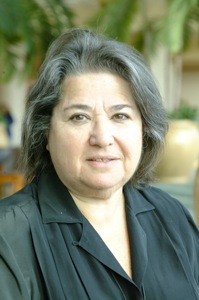-
- Same-sex marriage foes quiet but not to be discounted
- Lawmakers close teacher license loophole
- Senator apologizes for polygamy comments
- New policy for transgender kids in NY juvenile jails
- Transgender rights spread, but opposition mounts
- Advocates file to keep marriage ban off ballot
- National News Briefs
- World News Briefs
national
New policy for transgender kids in NY juvenile jails
State takes steps to protect GLBT youth in foster care and juvenile detention
Published Thursday, 26-Jun-2008 in issue 1070
SYRACUSE, N.Y. (AP) – Transgender youth in New York’s juvenile detention centers can now wear whatever uniform they choose, be called by whatever name they want and ask for special housing under a new anti-discrimination policy that advocacy groups say is among the nation’s most progressive.
“New York is way ahead of the curve,” said Roberta Sklar, a spokesperson for the National Gay and Lesbian Task Force.
“When you have a system like the New York Office of Children and Family Services putting out a clear nondiscrimination policy, it should be seen as a model for similar kinds of agencies all over the country,” she said.
The policy went into effect on March 17, the same day Gov. David Paterson was sworn into office to replace the disgraced Eliot Spitzer. Last month, Paterson directed all state agencies to immediately recognize same-sex marriages legally performed elsewhere as valid in New York.
Paterson spokesman Errol Cockfield said the policy reflects the state’s intention to be “tolerant, responsive and respectful” of gender identity and gender expression issues.
Hawaii and California are among the handful of states that have taken steps to afford specific civil rights protection to gay, lesbian, bisexual and transgender youth in foster care and juvenile detention, said Susan Hazeldean, director of the Peter Cicchino Youth Project for the New York City-based Urban Justice Center.
In a 2001 report, the center found that GLBT youth routinely experienced discrimination, harassment and violence in the New York’s juvenile justice system. The state runs 30 juvenile centers with a total of about 1,200 residents. OCFS officials estimate that there are between 20-30 transgender youth in its system.
“What we were concerned about is that LGBT young people are entering these programs facing a lot of hostility and violence, and coming out more traumatized and more damaged than when they went in,” Hazeldean said.
“We think this policy is going to make a real difference,” she said.
Ross Levi, public policy director at Empire State Pride Agenda, the state’s largest gay rights organization, also said the OCFS policy was among the most far-reaching in the country.
“OCFS has wisely said these students need an environment that is safe and that helps them reach their full potential,” Levi said. “It’s absolutely needed. Transgender youth talk about how they were at wits end just trying to survive in these facilities.”
The OCFS policy prohibits staff from asking residents about their sexual orientation or gender identity and provides that any disclosure must be voluntary. The policy also directs staff to talk to youth when they decide to reveal themselves.
“Staff should never just move on; talk about what it means for this youth to be lesbian, gay, bisexual, transgender, or questioning,” the 14-page policy states.
Under the policy, a transgender youth can request placement based on gender identity. Those requests will be heard by a special LGBTQ Decision-making Committee, which will include behavioral health and medical services experts as well as administrators. OCFS spokesman Ed Borges said the OCFS center in Red Hook has housed a number of transgender youth in the past because staff there has earned a reputation for tolerance.
Transgender youth will be provided private sleeping quarters and be allowed to shower privately. They also will be able to shave body parts, use makeup or grow their hair long.
The policy directs staff to learn and use the words gay, lesbian, bisexual and transgender in an appropriate context when talking with youth.
While all residents can ask to be called by a preferred first name rather than their legal one, the policy provides that males who believe they are female must be called “she,” and females who believe themselves male must be referred to as “he.” Staff also must use the preferred name and pronoun in any documents they file.
All residents wear a male or female uniform, but the policy allows a transgender person to wear an opposite sex uniform. They also may receive underwear of their choice, the policy states. The policy requires each facility to stock a small supply of bras and panties in case they are requested; girl’s centers must stock men’s underwear. Borges said OCFS spent about $4,500 to stock its facilities.
Like housing requests, most clothing requests will be referred to the decision-making committee to ensure their legitimacy, Borges said.
To date, there has just been one housing request made, but it didn’t go through because the youth ended up being sent to an adult jail, Borges said.
The policy shift was spurred, in part, by a 2006 lawsuit brought by a 15-year-old born a male but who dressed and identified herself as a girl. She had been taking prescribed feminizing hormones for nearly three years when she was arrested and placed in an OCFS facility.
In a civil complaint alleging sex and disability discrimination, the girl said OCFS staff took away her hormones and would call her by her male name only. The state paid $25,000 to settle the case and agreed to change its policies.
|
|
Copyright © 2003-2025 Uptown Publications


